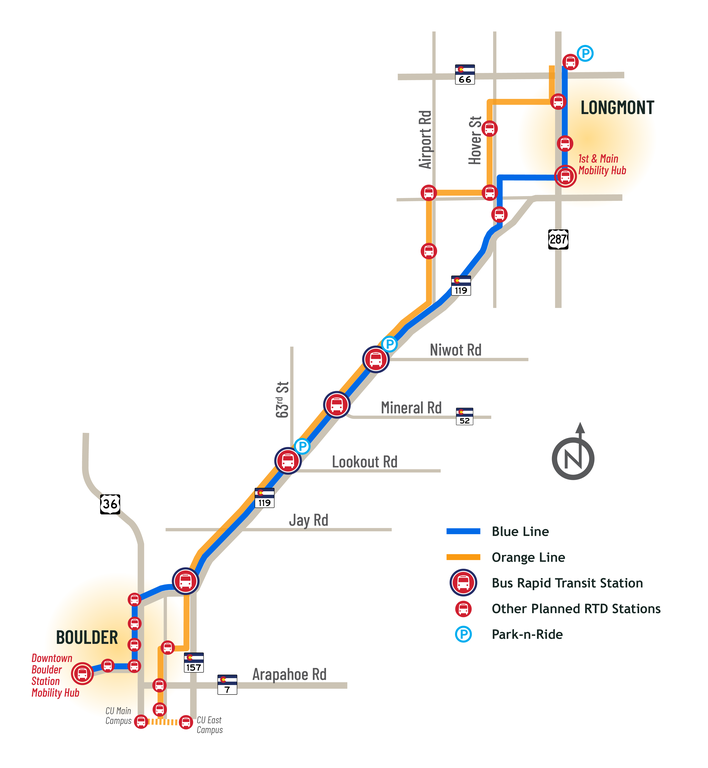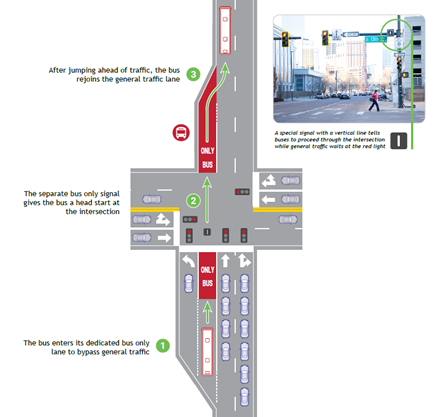Bus Rapid Transit
Bus Rapid Transit (BRT) is a high quality transit system designed to be more reliable, convenient, and faster than traditional bus service. BRT achieves high quality service because it avoids the delays that can typically slow regular bus service, like making numerous stops and getting stuck in traffic at intersections. BRT systems exist all over the world, including the local Flatiron Flyer service between Boulder and Denver.
Within the project limits, BRT stations are planned at 63rd Street, CO 52, 47th Street and Niwot Road. The stations will be in the median between northbound and southbound CO 119.
RTD’s new BRT service will operate two routes from downtown Boulder to Colorado Highway 66 north of Longmont.
- Orange: Begins at University of Colorado; replaces J Route
- Blue: Begins at Downtown Boulder Station; replaces the BOLT
The new CO 119 BRT service will replace the existing BOLT and J routes (J is not currently running). Local bus service schedules within Boulder and Longmont will be optimized to work with the new BRT service schedules.
Implementing a new BRT service is a multi-step process. New stations, Park-n-Rides and bus queue bypass lanes will be implemented during construction of the roadway improvements. From 2023 to 2024, RTD will monitor the success of the initial service changes and make routing and stop adjustments based upon customer feedback and observed demand. RTD expects the full opening day of the BRT service to be in mid-2027. On opening day, the orange and blue lines are anticipated to run on 30-minute intervals. Service may become more frequent as ridership and resources increase.

Transit Priority and Queue Bypass Lanes for Buses
BRT systems give buses a degree of “priority” over the other travel modes so that the bus can jump ahead of general traffic, providing faster and more reliable transit service. At the onset of the project, a Traffic Alternatives Study evaluated potential methods for giving buses priority in the corridor and recommended implementing queue bypass lanes as the bus priority tool for the corridor. Queue bypass lanes, also referred to as queue jumps, are a popular BRT tool used all over the world. The Traffic Alternatives Study determined that implementing BRT service and queue bypass lanes will shorten bus travel times in the corridor by nearly 50%!
Queue bypass lanes are dedicated bus-only lanes that will be implemented at key signalized intersections on the corridor (Jay Road, 63rd Street, CO 52, Niwot Road, and Airport Road). When a bus approaches one of these intersections, it will pull into its dedicated queue bypass lane. The bus will receive a special traffic signal that allows it to proceed while the general traffic is still stopped at the red light. Because buses have a special traffic signal, they can get a head start, jump ahead of the traffic, and then merge back into the general traffic lanes. In this corridor, all queue bypass lanes will be on the left side of the intersections, closest to the center median between northbound and southbound CO 119.
Image depicts how bus queue bypass lanes will function in the corridor.
(Click image to enlarge)

